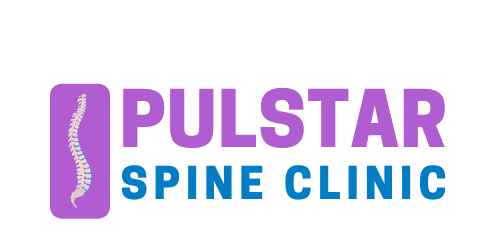Shoulder Pain Treatment in Bangalore
Having a shoulder pain may seem like end-of-the-world to many because it disrupts almost every activity that means engaging the upper body. It is not usual to just wake up and think about your shoulders much until you suddenly experience pain in one of them. Your shoulder features in mild activities like brushing and drying your hair, reaching behind your back to fasten a bra, or grabbing something overhead. You probably do at least one of these a day and wouldn’t take to cognizance how impossible it could be to cope with an aching shoulder.
You’re more likely to experience shoulder pain from a variety of common conditions as you age. “Shoulder problems are very common,” says Dr. Arun Ramappa, associate professor of orthopedic surgery at Harvard Medical School. The pain may come on slowly or at once, and it may range from mild to excruciating.
The shoulder is mainly a ball and socket joint. The shoulder joint (glenohumeral joint) is a ball and socket joint between the scapula and the humerus. It is the major joint connecting the upper limb to the trunk. It is one of the most mobile joints in the human body, at the cost of joint stability.
Below are some contributing factors that give your dear shoulder that stability which enables you to carry out daily tasks efficiently.
Types of Various Shoulder Pains and Explanation
Rotator cuff muscles
Surround the shoulder joint, attaching to the tuberosities of the humerus, whilst also fusing with the joint capsule. The resting tone of these muscles acts to compress the humeral head into the glenoid cavity.
Glenoid labrum
A fibrocartilaginous ridge surrounding the glenoid cavity. It deepens the cavity and creates a seal with the head of the humerus, reducing the risk of dislocation.
Ligaments
Act to reinforce the joint capsule, and form the coracoacromial arch.
Biceps tendon
It acts as a minor humeral head depressor, thereby contributing to stability.
Now, let us consider some of the most common conditions that may be responsible for your shoulder pain.
Rotator Cuff Injuries
They occur in various forms and degrees. In some cases, they are mild and sometimes severe, depending on what part is directly affected. The injuries could be in any of the three forms below.
Tendinitis results when there is a case of overuse of the rotator cuff. This then makes it become inflamed. Persons likely to experience this form of injury are tennis players, who use an overhead serve and painters who have to stretch upward to do their jobs commonly experience this injury.
Bursitis, another likely rotator cuff injury. When bursitis occurs, there is an inflammation of the bursa. Bursa has fluid-filled sacs that are sandwiched between the rotator cuff tendons and the underlying bone.
Rotator cuff strains or tears appear when there is overuse or acute injury. The tendons linking the muscles to bones can overstretch or strain or tear, a bit or wholly. The strain or tear may also be as a result of a fall, a motor-bike accident, or another sudden injury. These injuries typically cause intense and immediate pain.
Note that some rotator cuff injuries may not be painful. Some are the result of degenerative conditions, meaning the rotator cuff could be damaged for months or years before symptoms start to appear.
Frozen Shoulder
Frozen shoulder, also known adhesive capsulitis, which hinders the motion of your shoulder to a certain range. When the tissues in your shoulder joint become thicker and tighter, scar tissue develops over time. As a result, your shoulder joint doesn’t have enough space to rotate properly. Common symptoms include swelling, pain, and stiffness. Persons between the ages of 40 to 60 are more likely to have the condition. Frozen shoulder is more common in women than in men and in people with certain medical conditions, such as diabetes, high cholesterol, or thyroid disorders.
Calcific tendinitis
Calcium deposits that stay within the rotator cuff tendons cause pain from calcific tendinitis. While it’s unclear exactly what causes these deposits to form, some experts believe they may result from a healing process in the ligament gone awry. The condition causes sudden, severe pain that often starts in the morning. It’s more common in middle-aged and older adults and those who have diabetes.
Osteoarthritis
When people think of osteoarthritis, what comes to their mind is a pain in the knee and hip, which are likely areas for arthritis pain. Even though osteoarthritis affects the shoulder, less often, it’s not unlikely, says Dr. Ramappa. The condition develops when cartilage cushions between the bones in the shoulder erode, causing the bones to rub against one another. There are numerous treatments for osteoarthritis, including rest, modifications to activities, anti-inflammatory drugs, corticosteroid injections, and surgery in some cases, says Dr. Ramappa.
Home Remedies Of Shoulder Pain
Not all pains you experience on or in your shoulder may need a doctor’s immediate attention (except pains feel unbearable). Some kind of pains may require just some easy steps to help relieve the pain at home. Treating shoulder pain often involves soothing inflammation (swelling and redness) and strengthening muscles.
Here are several ways you can take care of yourself and relieve shoulder pain. There is no total assurance that these methods must work though. But bear in mind that so far, the pains you are experiencing don’t make you feel like having your arm amputated, you might not need a doctor. All you need do is pay attention and follow accordingly the home remedies that are stated below.
Let’s do this!
Muscle Relaxants
Pain may be treated by muscle relaxants if you have muscle tension or spasms around the shoulder joint. Some easy-to-find muscle relaxants include cyclobenzaprine and tizanidine. You will need a prescription from your doctor or pharmacist.
Always remember that muscle relaxants cause drowsiness and shouldn’t be taken if you’re driving or operating machinery.
Applying Cold Compress
This can help reduce swelling in the shoulder. Cooling also helps to a numb sharp pain can be killed by applying a cold compress. Place an ice pack for about 20 minutes, for about five times a day. You may consider using a frozen gel pack, ice cubes in a plastic bag, or a bag of frozen peas. Tie the cold pack in a soft towel. It is advised not to apply a cold pack directly to your bare skin as burns may be experienced.
Trying Compressions
Wrap the shoulder with an elastic medical bandage to help reduce swelling and pain. Use a cold compression bandage or a regular ACE bandage. You can also get a shoulder wrap from a pharmacy. Wrap it snugly but not too tight. You don’t want to block blood flow. If your arm or hand begins to feel numb or tingly, or turn blue, loosen the compression bandage.
Applying a bit of heat
Applying Heat aids in relaxing tense muscles and soothing a stiff shoulder. It helps to reduce pains within muscles and arthritis in the shoulder. Use a heated gel pack, heating pad or a hot water bottle.
Taking over the counter Pain medication
Acetaminophen and aspirin can help reduce pain. This aids you cope with the injury and get quality rest(sleep) as you heal.
Side effects such as stomach upset and heartburn may erupt as a result of the pain medications. Seek the advice of a doctor if you are taking them for a period more than twenty-eight days.
Getting enough Rest and changing activity
It is required that you take a break from or in fact find another activity different from that which causes pain to your shoulder. This is a very vital step in getting your shoulder back to work again. Moving the shoulder gently a few times is also important as it helps to keep the shoulder muscles strong and flexible.
Engaging in Shoulder exercises and stretches
Doing some gentle exercises and stretches helps to keep your shoulder strong and flexible. Always remember to:
- If you have more shoulder pain, just stop. It may be too early for you to try.
Carefully monitor how you do it. Exercising incorrectly can also aggravate shoulder problems.
Warm up before taking the next step of stretching. Light shoulder rolls, easy movements, or even a warm shower are all ways to warm up your muscles before exercise and stretching.
Trying Pendulum stretch for range of motion
- Stand and bend at the waist.
- Let your arm on the injured side hang straight down.
- Keep your neck relaxed.
- Move your arm in a circle up to 20 times.
- Do one or more times in a day.
Overhead shoulder stretch
- Sit or stand to do this shoulder stretch.
- Intertwine your fingers in front of you.
- Bend your elbows and raise your arms above your head. You can also place your hands on your head or behind it.
- Gently squeeze your shoulder blades together to move your elbows back. Continue for up to 20 repetitions. Repeat 5 to 10 times a day.
Note that the above methods that not an assurance that your shoulder pain will completely disappear, especially in the cases of severe pain where the home remedies feel too difficult to engage in. Do not continue trying these remedies when the pain becomes unbearable. Seeing your doctor becomes necessary if you experience more pain or observe no improvements at all.
Digital Spine Analyzer Assisted Treatment for Shoulder Pain at Pulstar Spine Clinic Bangalore
At Pulstar Spine Clinic, we treat a variety of shoulder pain related ailments using a digitally assisted machine as well as with our chiropractic expertise. Our treatment approach is non-invasive, long-lasting and safe. Always use the form beside to schedule an appointment to secure your spot for a consultation to avoid the rush.


